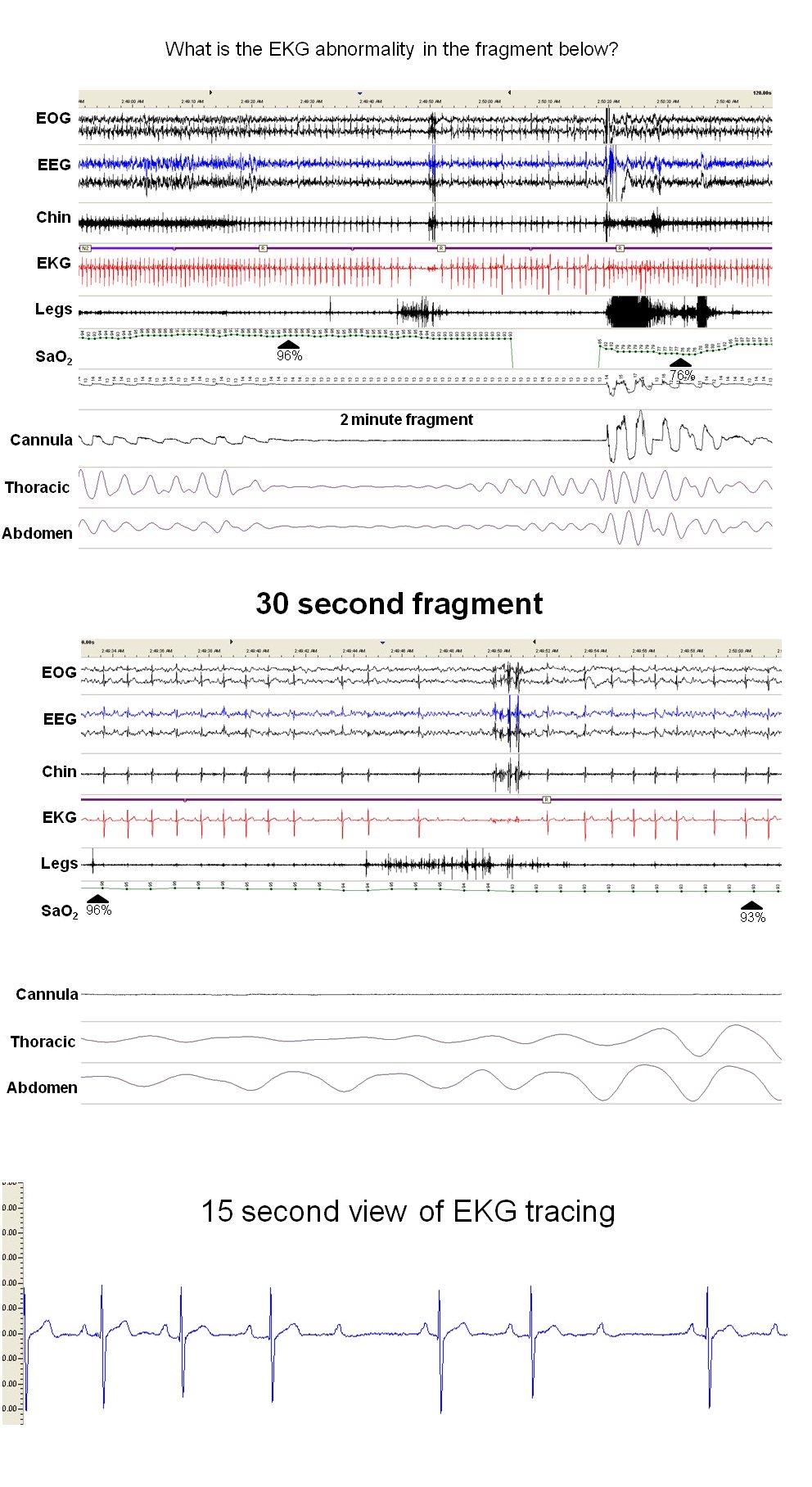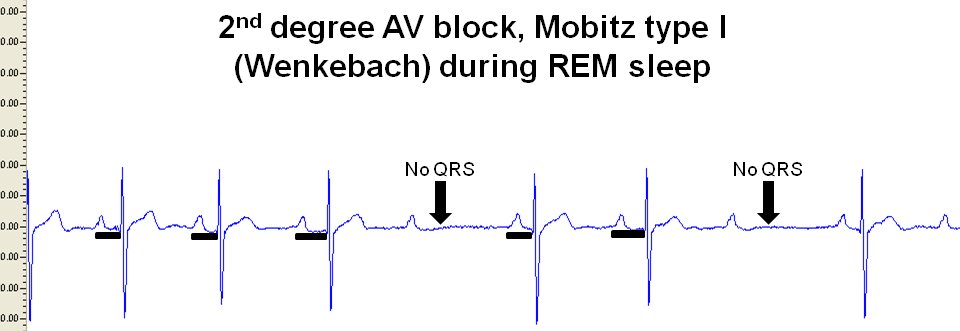Contributed by Susheel P. Patil, MD, PhD, Assistant Professor of Medicine, Johns Hopkins School of Medicine, Baltimore, MD
41 year-old African American male with hypertension and schizophrenia presenting with loud snoring and nocturnal choking.
- His Epworth Sleepiness Scale score is 13/24.
- His body-mass index is 38.1 kg/m2 with an airway Mallampati score 3.
- His medications include trazadone, nifedipine, and monthly haloperidol injections.
- His baseline EKG shows no evidence of QT prolongation.
- Sleep study demonstrated severe obstructive sleep apnea with an RDI of 98.4 events/h.
On physical examination his BMI was 36 kg/m2 and his neck circumference was 42 cm.
Question
What is the EKG abnormality in the fragment below?
Answer : 2nd degree AV block, Mobitz type I (Wenkebach) during REM sleep
Discussion
- This arrhythmia was observed during an obstructive apnea with an oxyhemoglobin desaturation to 76% (see 2 minute view).
- Bradyarrhythmias are observed in 5-10% of patients with obstructive sleep apnea. The majority of bradyarrhythmias occur during REM sleep.
- Mechanisms thought to be responsible for bradyarrhythmias during REM sleep and obstructive respiratory events include:
- Increased parasympathetic tone and decreased sympathetic tone during tonic REM compared to wake and NREM sleep. Phasic REM in contrast is associated with surges in sympathetic activity.
- Hypoxemia stimulates carotid chemoreceptors leading to increased vagal stimulation and bradycardia.
- Obstructive events tend to be of longer duration and oxyhemoglobin desaturations are often more severe during REM sleep than NREM sleep.
- During the patient’s CPAP titration night, no further bradyarrhythmias were observed at the therapeutic CPAP pressure level
- Elimination of obstructive respiratory events and intermittent hypoxemia are thought to mitigate the increase in vagal tone that predisposes to the development of bradyarrhythmias during sleep.
- Since patients with severe OSA are predisposed to arrhythmias during sleep, careful review of the EKG tracing should be performed during sleep study interpretations.
References
- Koheler U, Fus E, Grimm W, Pankow W, Schafer H, Stammnitz A, Peter JH. Heart block in patients with obstructive sleep apnea: pathogenetic factors and effects of treatment. Eur Resp. J 1998; 11: 434-439.
- Becker HF, Bradenburg U, Peter JH, vonWichert P. Reversal of sinus arrest and atrioventricular conduction block in patients with sleep apnea during nasal continuous positive airway pressure. Am J Resp Crit Care Med 1995; 151: 215-218.
- Guilleminault C, Connolly SJ, Winkle RA. Cardiac arrhythmia and conduction disturbances during sleep in 400 patients with sleep apnea syndrome. Am J Cardiol 1983; 52: 490-494.
- Verrier RL, Harper RM, Hobson JA. Cardiovascular physiology: Central and autonomic regulation. In: Kryger MH, Roth T, Dement W, editors. Principles and Practice of Sleep Medicine, 4th ed. Philadelphia, PA: W.B. Saunders; 2005. p. 192-202.





